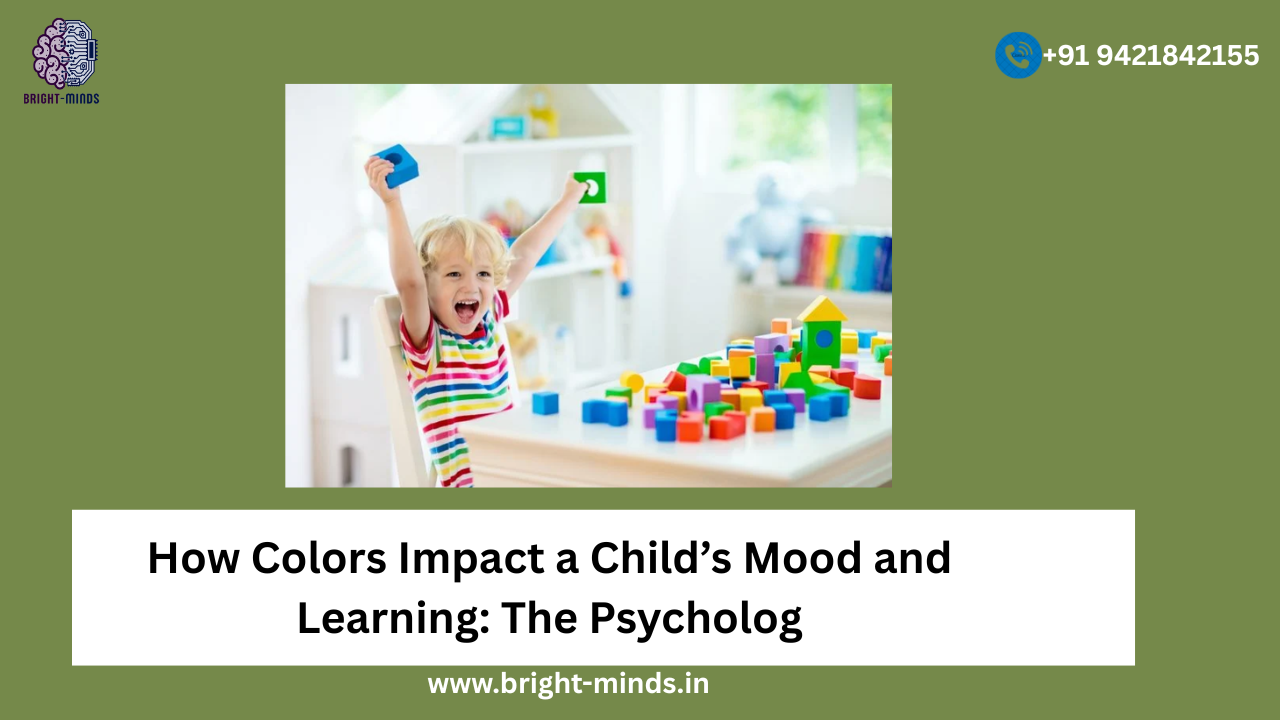Red: Energy and Focus
🔥 Why it works:
Red is a bold, high-energy color often associated with passion and excitement. When used in the right way, it can help stimulate focus and energy, making it ideal for situations where you want your child to feel alert and active. However, too much red can create feelings of frustration or aggression, so it’s important to use it in moderation.
Tip: Add a touch of red to your child’s study space or their school supplies to help boost concentration and energy during homework time.
Blue: Calm and Concentration
💙 Why it matters:
Blue is known for its calming and soothing effects. It’s often linked with tranquility and clear thinking, which makes it a great color for creating a peaceful learning environment. Studies suggest that the color blue helps to lower heart rates and reduce stress, making it ideal for environments where calm and focus are needed, like during reading or studying.
Tip: Use blue in your child’s bedroom or study area to help them concentrate and reduce anxiety during learning sessions.
Yellow: Optimism and Creativity
🌟 Why it works:
Yellow is a cheerful, energizing color that stimulates creativity and enthusiasm. It’s associated with happiness, optimism, and positivity. Yellow can also improve memory retention and focus, making it ideal for environments where new ideas and brainstorming are encouraged.
Tip: Incorporate yellow into learning spaces or during creative activities to spark imagination and keep your child motivated.
Green: Balance and Relaxation
🍃 Why it’s beneficial:
Green is often associated with nature, balance, and growth. It has a calming and balancing effect, helping to reduce stress and promote emotional well-being. Green can also enhance focus and attention, making it a great color for study spaces or areas where your child needs to stay relaxed but alert.
Tip: Use shades of green in your child’s classroom or in their study space to create a balanced environment conducive to calm learning and focus.
Orange: Enthusiasm and Social Interaction
🍊 Why it’s helpful:
Orange is a vibrant and energetic color that combines the warmth of red and the cheerfulness of yellow. It’s a great color to use in social spaces, as it encourages communication, collaboration, and enthusiasm. Orange helps children feel more social and open, which can be beneficial for group learning or team activities.
Tip: Add a few orange accents to spaces where your child interacts with others, like in their playroom or during group study sessions.
💡 How to Use Colors to Enhance Learning and Mood
- Design Learning Spaces: Choose colors based on the task at hand. For example, use blue and green for study areas to help focus, and orange or yellow for areas meant for creativity and socializing.
- Color in Educational Materials: Use colorful worksheets, posters, and tools to engage your child and make learning feel more dynamic. Color-coded systems can also help organize tasks and boost motivation.
- Introduce Color Through Activities: Engage your child in coloring activities that use the colors mentioned above. You can pair specific colors with tasks to help reinforce their psychological effects—like using green during relaxation time or red for more focused, energetic work.
- Experiment with Your Child’s Preferences: Every child is different. Pay attention to how they react to certain colors and adjust their learning environment accordingly. Some children might feel calm with blue, while others might feel more energized by orange.
Tip: Keep the color palette balanced—too much of one color can overwhelm or overstimulate, so mix and match to find a combination that best suits your child’s needs.
🏫 Why Color Matters at Bright-Minds
At Bright-Minds, we believe in the power of creating a stimulating and supportive environment for learning. We understand that every child is unique, and their surroundings play a big role in shaping their mood and learning experience. By incorporating the right colors into learning spaces, we help children feel more comfortable, focused, and engaged with their learning process.
🌟 Final Thoughts
Colors are more than just a visual experience—they can profoundly influence a child’s mood, energy levels, and ability to focus. By understanding how different colors affect learning and emotions, you can create a more effective and enjoyable learning environment for your child. Whether you want to boost creativity, calm their nerves, or increase focus, the right colors can be a simple yet powerful tool in supporting their academic and emotional growth.
You may also like this:-

